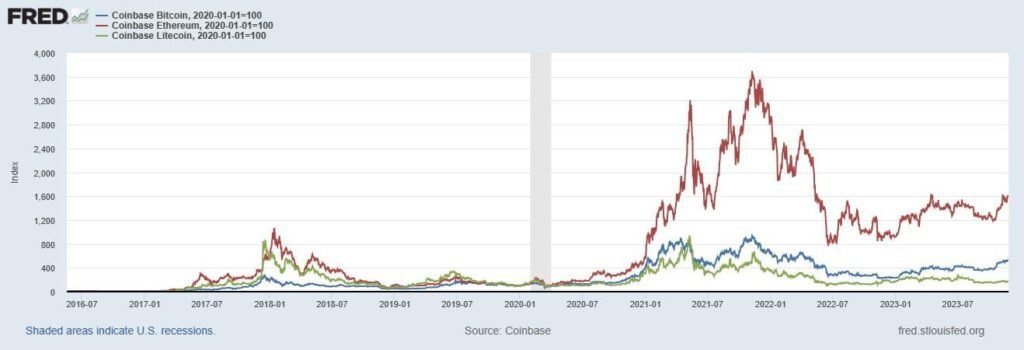For years, people involved in cryptocurrencies, whether in companies that provide products and services or in groups and individuals that strongly promote them, have fended off criticism. It was just a few bad actors. Things would work themselves out. Those who didn’t jump in would appear as losers.
Given the number of outrageous results and events in recent years, it is high time to question whether the whole idea of a completely decentralized digital form of exchange makes sense. It is not a currency in the classical sense of the features it needs. As an investment, it was a wild guess. And some of those responsible for important mechanisms (which scoff at the claim of decentralization) have proven to be untrustworthy.
Start with important features of a coin:
- Store of value — coins are supposed to have value and have value over time.
- Value stability — currencies need some degree of predictability in their value.
- Medium of exchange — a holder of a currency is supposed to be able to pay for goods and services generally with it.
- Liquidity — a currency should be easy to buy and sell.
- Portability — you must be able to move currency around and exchange it for other currencies.
Proponents would claim that cryptocurrencies do this, but in reality they do not. Even the most popular ones don’t have predictable prices. Below is one Bitcoin, Ethereum and Litecoin chart
LTC
displayed in index format. The display does not have an objective value like dollar equivalents, but how their values vary compared to where they were on January 1, 2020.
Indexed changes in the value of Bitcoin, Ethereum and Litecoin cryptocurrencies.
Federal Reserve Bank of St. Louis
Here is one similar chart of the US dollar, using the Federal Reserve’s broad nominal US dollar index. But the graph is deceptive because the scales are different. A huge jump is perhaps a 10% to 12% increase in value. A steep drop like the one in July 2021 is about a 4% drop.
Fluctuation in US Dollar Prices.
Federal Reserve Bank of St. Louis
But with cryptocurrencies, a big change is anywhere from hundreds to thousands of percentage changes. They lack the stability and arguably the key store of value feature if the value of a cryptocurrency coin can rise and then fall in this way. Note that there are thousands of cryptocurrencies and most are probably much more volatile.
Even the big cryptocurrencies aren’t widely used to pay for things. When was the last time you bought groceries or a hammer or gum and Bitcoin
BTC
Even touting the digital capabilities of cryptocurrencies seems silly given that currencies and the broader concept of money are digitally tracked and enabled. Credit and debit cards are all digital transactions. Bank deposits are digital ledger entries.
If cryptocurrencies fail as real currencies, they must return to investments. But there is nothing behind them. Buy shares and own a share of a company with assets, income, profits. Buy a bond and while your investment has risk, there is a company or government with resources and generally the ability to pay interest and then principal.
The risks are much higher with cryptocurrencies. As MarketWatch reported At the end of last year, an estimated $3 billion was lost to crypto hacks in 2022, up from $2 billion in 2021. That’s not counting the many scams.
Criminal theft compounds the astonishing array of outrageous activities the world has seen. Sam Bankman-Fried, who delayed the massive fraud that was FTX, is sitting in prison. Binance is facing a $4.3 billion fine (it’s not clear the company has the money to pay), and CEO Changpeng Zhao was forced to resign after pleading guilty to money laundering.
In terms of relevance to the respective industries, this would be like seeing the NYSE and Nasdaq break apart in the wake of the scandals.
Perhaps there is some legitimate and useful role that cryptocurrencies will serve at some point. But now is not then.

